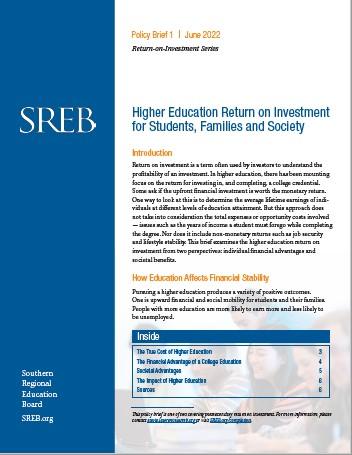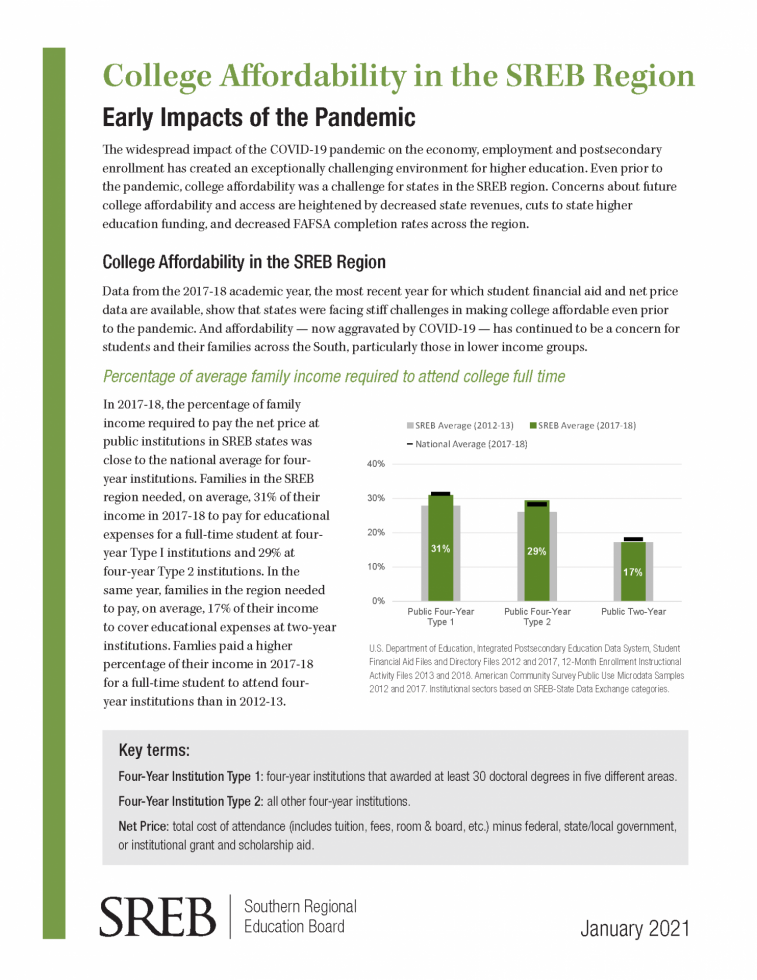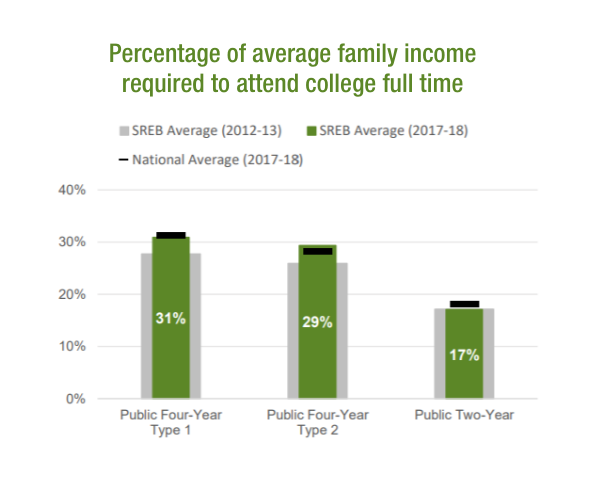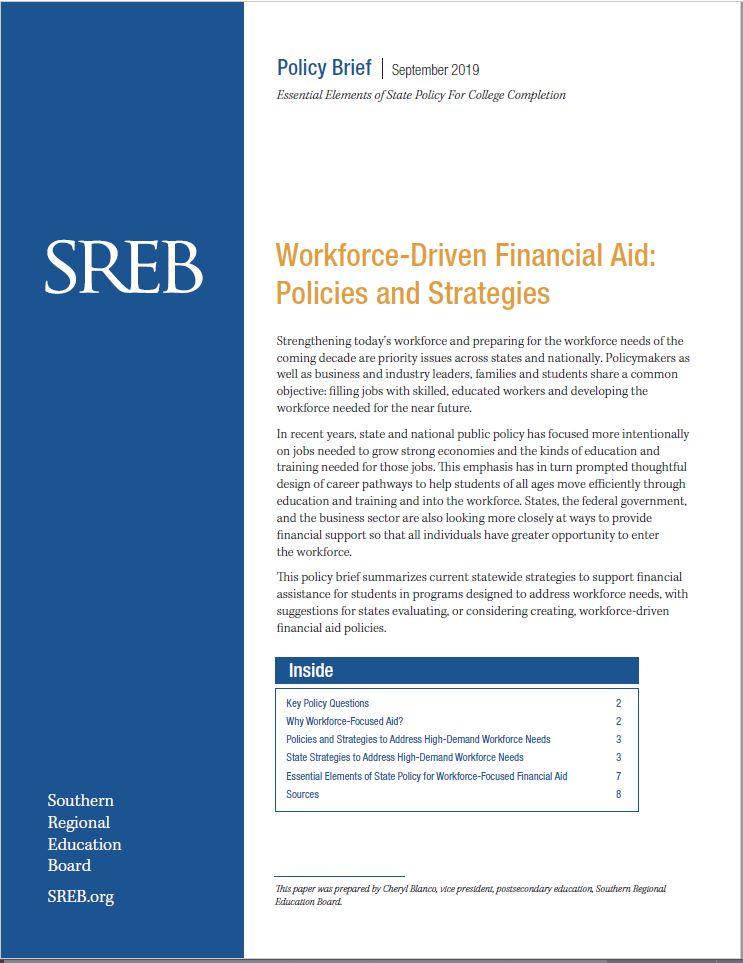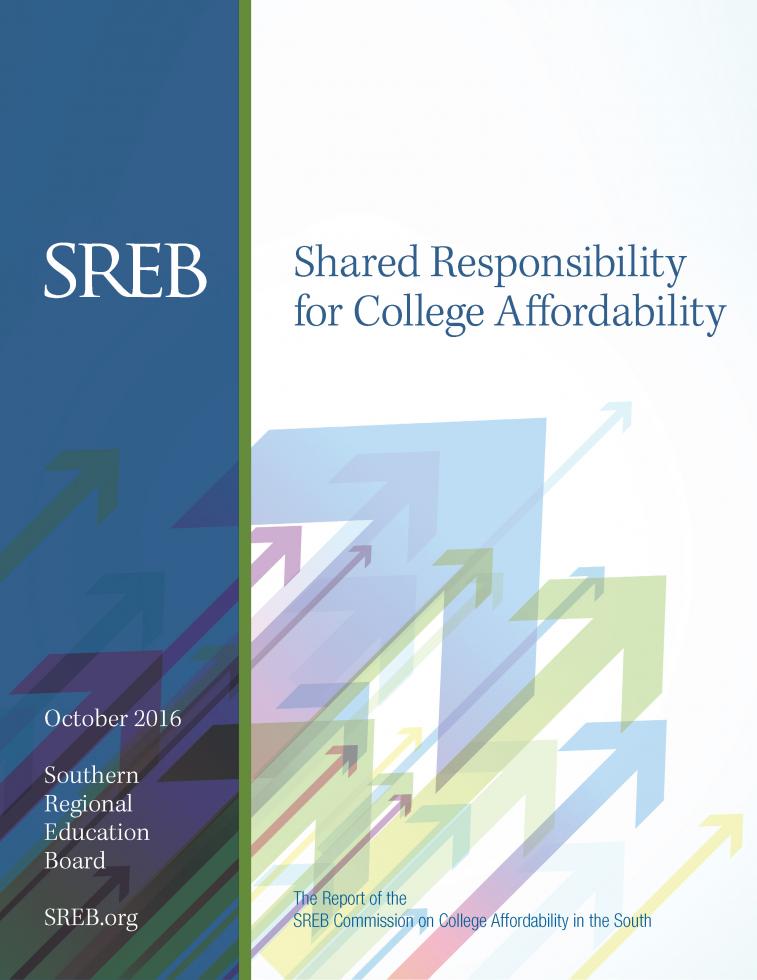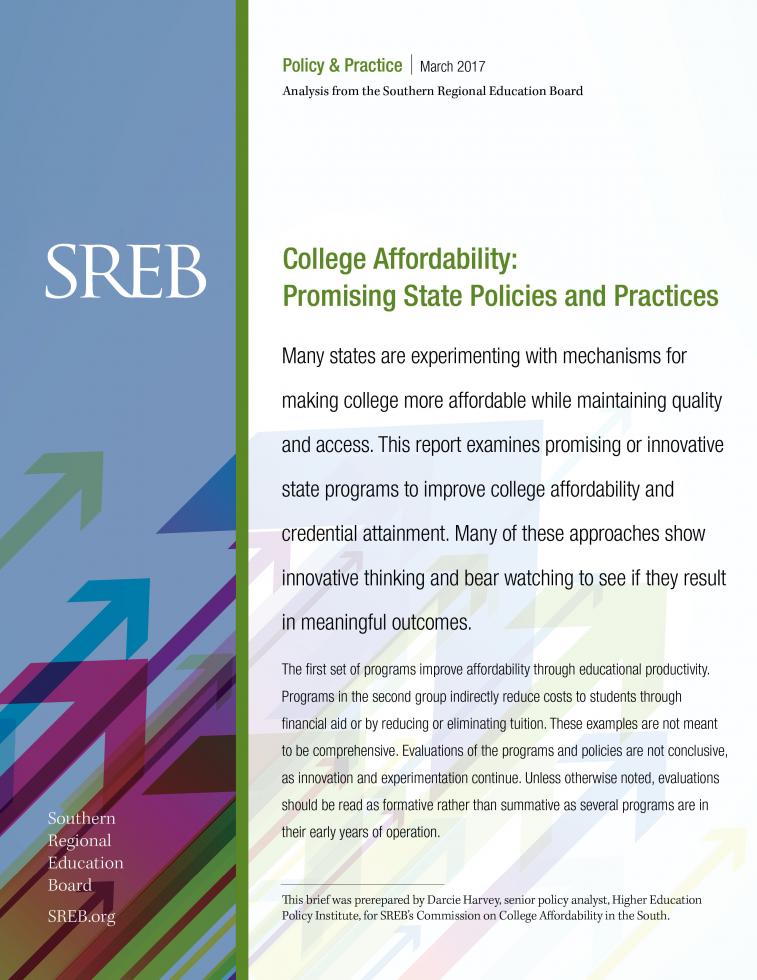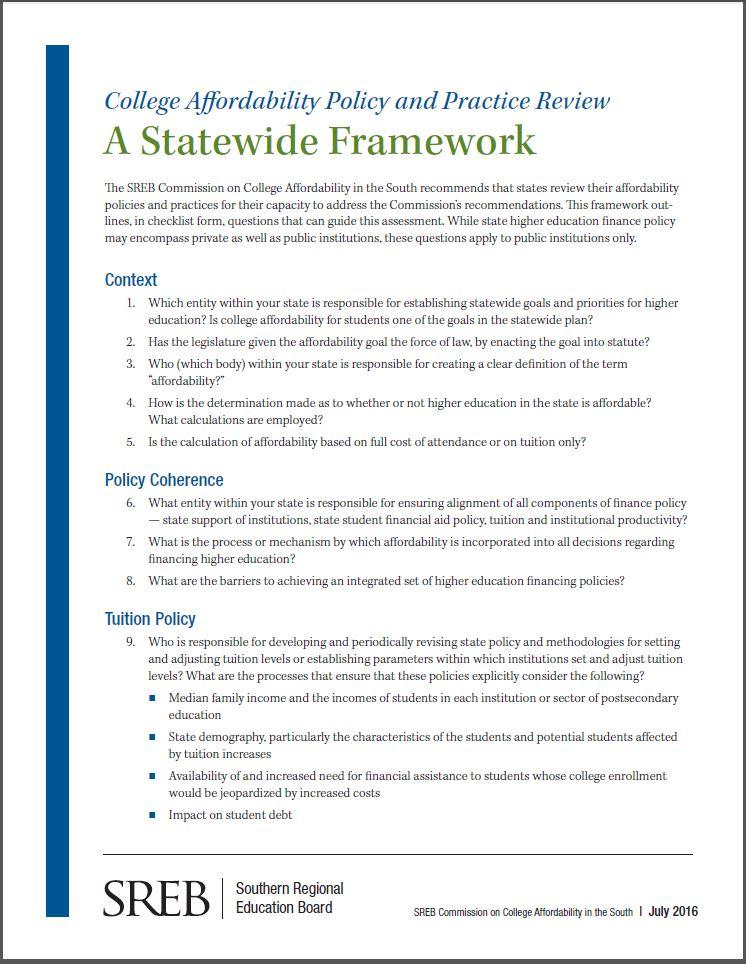Topic: College Affordability
College Affordability
Affordability is a crucial component in students’ ability to earn college degrees. SREB offers data, reports, recommendations and technical assistance to help states raise their college attainment rates and bolster their economic futures.
How affordable is college in your state?
16 state profiles, January 2021
State-level data and how each state compares to national and SREB-region averages. Each state profile details net price at different types of institutions, state financial aid based on need or other factors, student borrowing, and percentage of family income needed to pay for college at different income levels.
Find your state’s profile >
Higher Education Return on Investment for Students, Families and Society
With mounting focus on the return on investing in a college degree, this brief shows how the benefits outweigh the costs to individuals, communities and society. A postsecondary credential remains a profitable investment for individuals, who in general earn more and are less likely to be unemployed, as well as for economies that need a highly skilled workforce and residents who contribute to society.
College Affordability in the SREB Region
Early Impacts of the Pandemic
Making college more affordable for families has been a critical issue for states in the SREB region for many years. Now the negative economic impacts of the COVID-19 pandemic have created additional barriers to college affordability. This brief provides an overview of college affordability in the SREB region based on data from the 2017-2018 academic year. The report explores the impact of the pandemic on enrollment and access, state budgets, higher education budgets and other factors that contribute to college affordability.
The Cost of Completing College
Promising Strategies to Support Student Success
View the webinar recording
Many students persevered despite pandemic hurdles to starting or staying in college. This webinar shared strategies that hold promise for the longer-term to increase support for the students who need it most.
Costs of four-year college rose sharply for low-income families even before pandemic
ATLANTA — The lowest-income families in many Southern states
saw major five-year increases in the share of their income
required to send a student to a public four-year university — and
the pandemic could make the situation worse.
Workforce-Driven Financial Aid: Policies and Strategies
Essential Elements of State Policy For College Completion
The rapidly evolving workplace has created a shortage of skilled and educated workers in many fields, leaving essential jobs unfilled and millions of adults unqualified for them. This policy brief summarizes statewide strategies to support financial assistance for students in programs designed to address workforce needs. It includes suggestions for states that are evaluating, or considering creating, workforce-driven financial aid policies.
Public Higher Education Affordability in the South
Regional Profile 2018
A synthesis of trends in the SREB region — including tuition, graduation rates, family income and financial aid — to help state policymakers assess the affordability issue and the need to address it.
How affordable is college in SREB states?
SREB college affordability profiles detail state-level data
Tuition, financial aid and other measures that drive college affordability vary from state to state. To help policymakers evaluate and improve affordability in their states, SREB provides affordability profiles specific to each of its 16 states.
New in this year’s reports: charts showing the changing percentages of tuition and fees versus state appropriations from 2006 to 2016.
Each report details state-specific data including:
Promises Kept in Oklahoma
SREB review of financial aid program
Oklahoma’s Promise is an effective college scholarship program that meets its goals and helps the Oklahoma State Regents for Higher Education increase education attainment in the state, according to a report from the Southern Regional Education Board. The report cited Oklahoma’s Promise as “an example of how a state can invest valuable resources in its students and see a strong return on that investment.”
Shared Responsibility for College Affordability
Report of the SREB Commission on College Affordability in the South
The Commission offers eight policy recommendations for affordability, grounded in a shared responsibility model where states, families, colleges and the federal government each play a role. The report charts trends and data on educational attainment, workforce needs, student diversity, family income, student debt, higher ed funding, tuition, net price, financial aid and more. An appendix offers questions to help states begin reviews of their policies and practices.
College Affordability
Promising State Policies and Practices
This report explores promising or innovative state programs that aim to improve college affordability and credential attainment — and bear watching to see if they result in meaningful outcomes. Prepared for SREB’s Commission on College Affordability in the South.
A Statewide Framework
College Affordability Policy and Practice Review
The SREB Commission on College Affordability in the South recommended that states review affordability policies for capacity to make postsecondary education more affordable for students and families. This framework outlines, in checklist form, questions to guide the review. Questions cover governance, aligning policies toward affordability, tuition policy, need-based student financial aid, student debt, investing in innovation, and shared responsibility among states, agencies, institutions and families.


